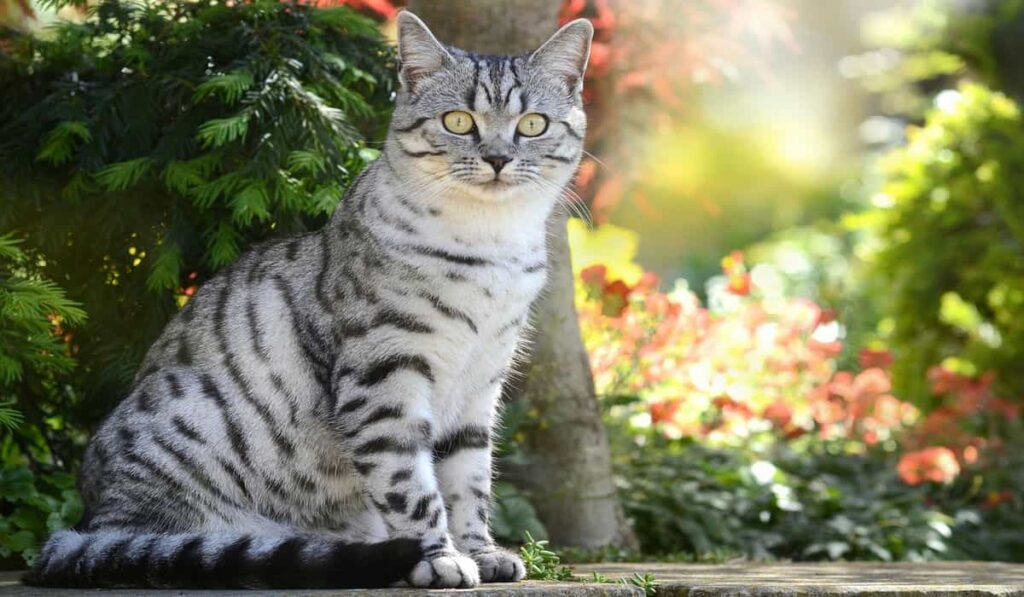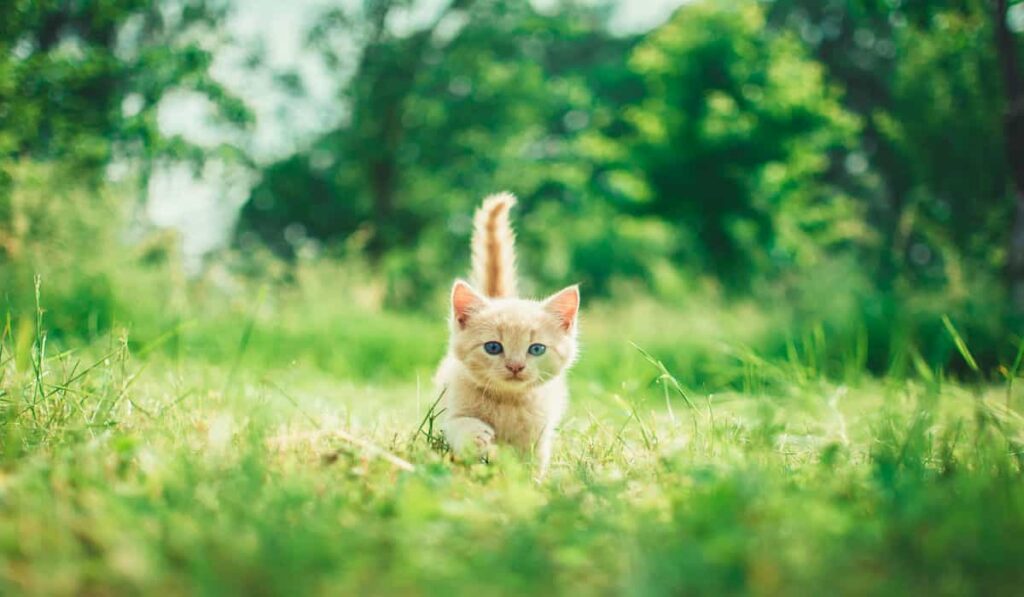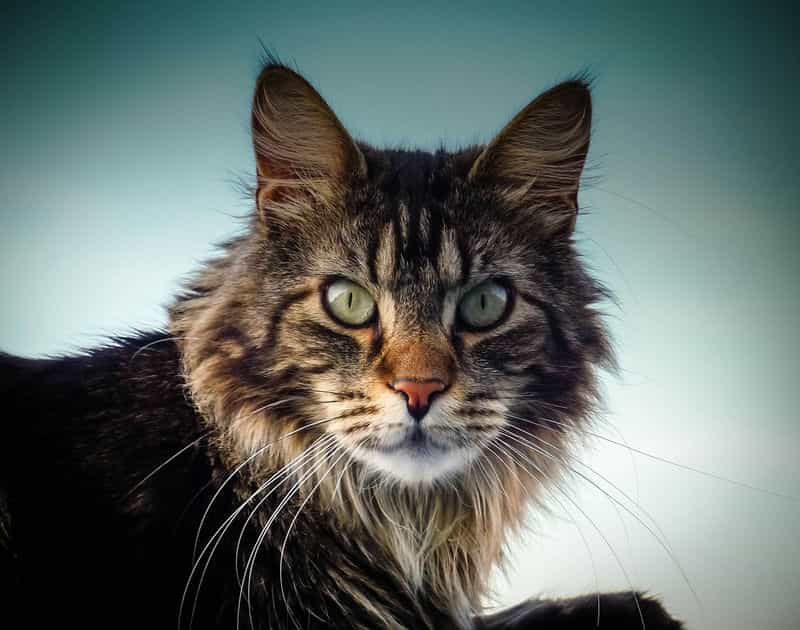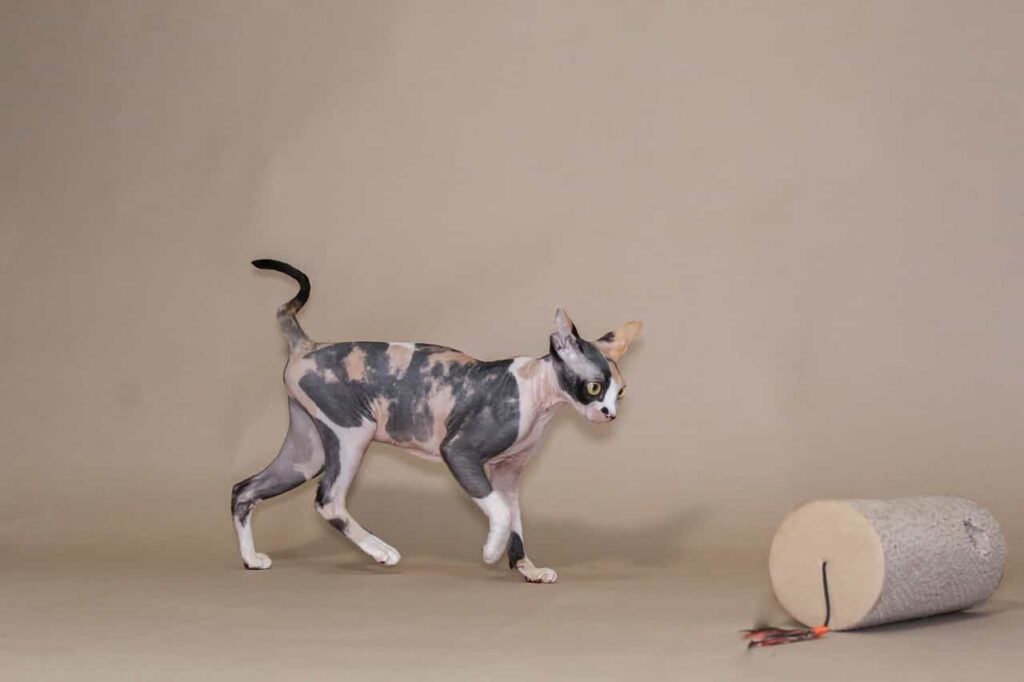Embark on a journey to explore the captivating world of the Havana Brown cat, a breed distinguished by its luxurious chocolate-colored coat and enchanting green eyes. These rare felines, with their sociable and affectionate nature, are more than just pets; they are companions who add warmth and charm to any home.
In this comprehensive guide, we delve into the nuances of caring for a Havana Brown, from grooming and training to adoption and socialization. Whether you’re a long-time cat enthusiast or considering the unique experience of owning a Havana Brown, this guide offers invaluable insights into nurturing and enjoying life with these extraordinary cats.
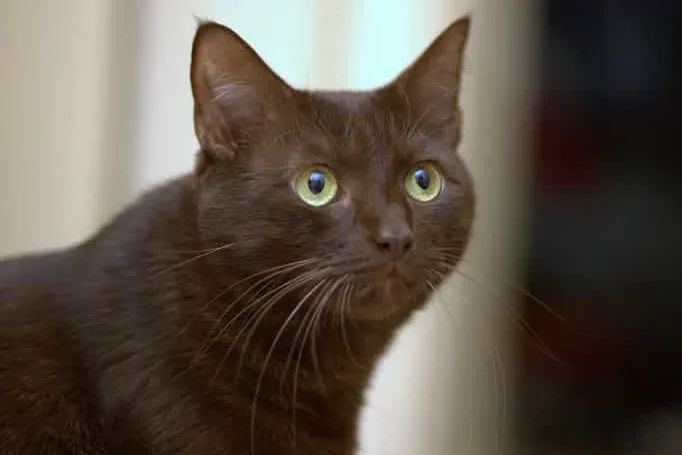

Table of contents
Havana Brown cat is a planned breeding by English cat fanciers. They crossbred a Siamese cat with a Black domestic cat in the 1950s. A Russian Blue cat was introduced in the program at the early stage, but now there are no Russian Blue cats in this breed.
Swiss Mountain self-Brown cats were seen in the cat shows in the United Kingdom in 1890 but disappeared after the Second World War (1939-1945). Swiss Mountain cats were never used in the breeding program of Havana Brown cats, and there is no connection between Havana Brown cats and Havana-the capital of Cuba as well.
Breed specialty of Havana Brown
Other names:
Havana, Chocolate cat.
Personality:
Intelligent, affectionate, sweet, playful, sensitive, dependent, and suitable for Brown cat lovers, pets, and children.
Coat pattern and color:
Solid design with Red-Brown color.
Coat length:
Short
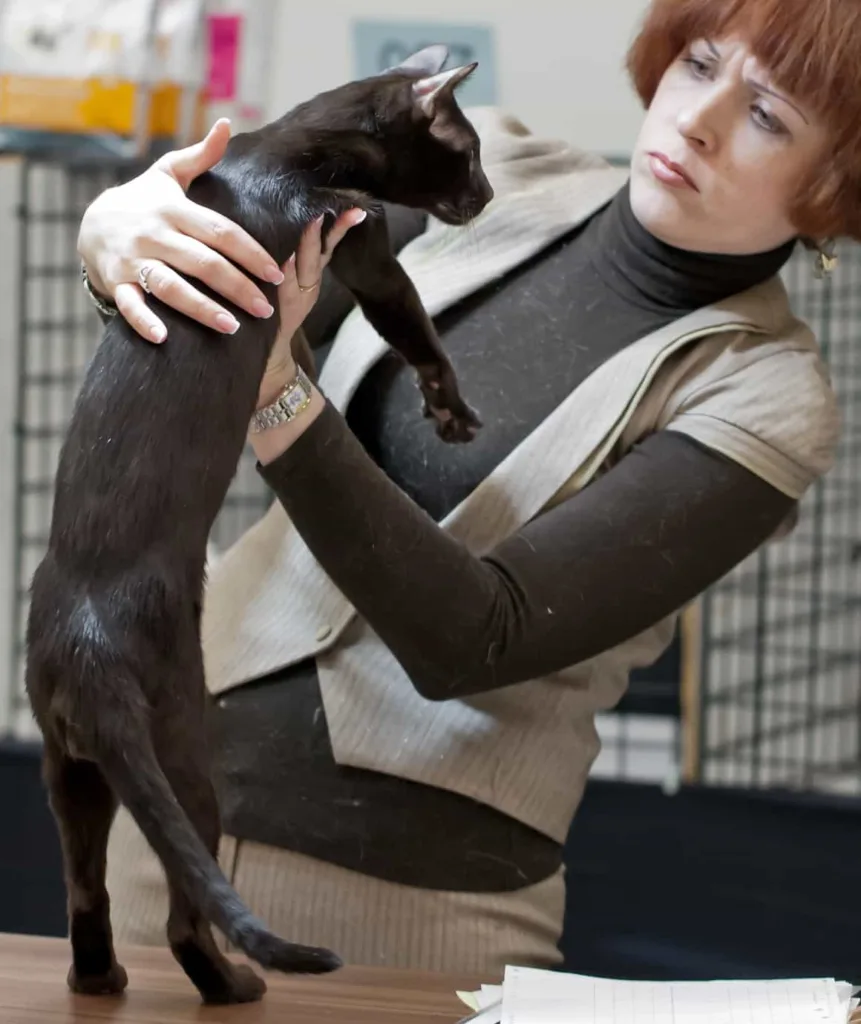

Length:
Up to 11 inches
Weight:
Up to 12 pounds
Vocalizing tendency:
High
Joyfulness:
High
Grooming needs:
Low
Attention needs:
High
Docility and hardiness:
Medium
Intelligence: High
Life expectancy: up to 15 years.
Origin- Thailand, UK, USA.
Types of Havana Brown cat
The breed- Havan Brown emerged mainly in the UK and USA. So, there were 2 different types of Havana Brown in these 2 countries over the years- one Havana brown of English type and American type. These 2 old types have a long morphology and similarities with their ancestor’s Siamese cats- A very fine and muscular breed from Thailand.
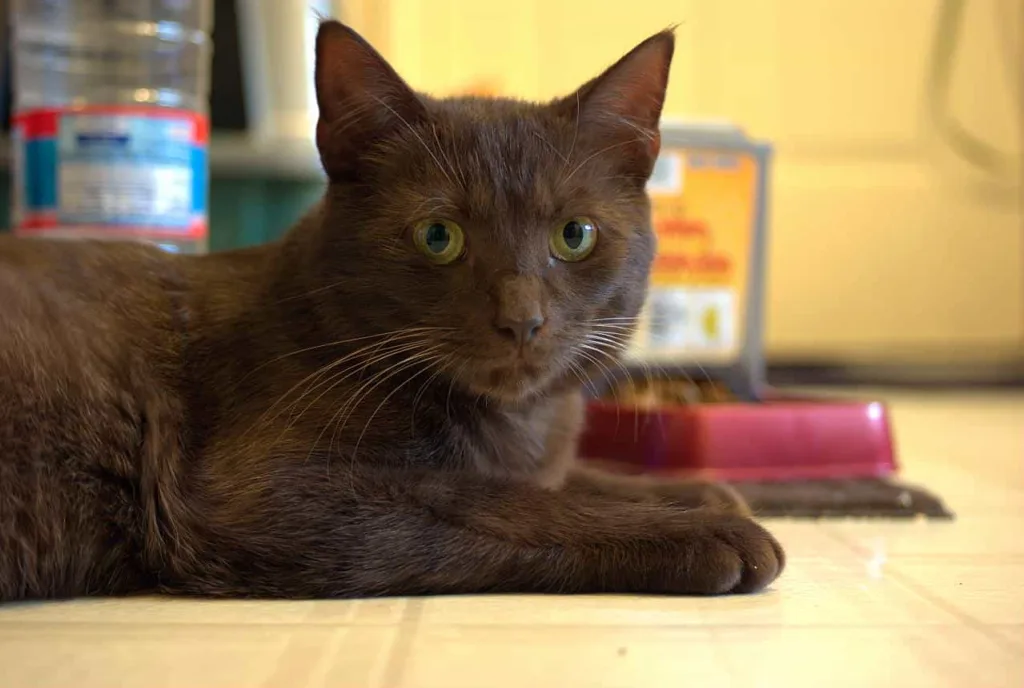

Another type is Sufflock. British enthusiasts created the breed in recent years. Suffolk is a traditional version of Havana Brown. It was the opposite of the modern version. The Governing Council of Cat Fancy (GCCF) recognized it as a separate breed in 2014.
Sufflock’s Grooming and caring needs:
Low but high in dental care.
Sufflock’s eye color:
Green
Is Sufflock breed Hypoallergenic? No
Sufflock’s life expectancy:
up to 15 years
Sufflock’s Origin:
United Kingdom
Origin of the Havana Brown breed
The English breeders produced Swiss mountain cats and presented them in cat shows in early 1890. But the cats lost the favor of the English breeders after the Second World war (1939-1945) and disappeared.
However, 5 English breeders got interested in Brown cats in the 1950s, and they started to breed that cats. They crossbred Siamese cats and Domestic Black cats so that the offspring became Brown and got the elegant foreign-type body of Siamese cats.
Early breeders used Russian Blue cats in this program, but Russian Blues gradually withdrew from the breeding story. There were 5 lady breeders in a group- Mrs. Armitage Hargreaves (Laurentide Cattery), Mrs. Munroe- Smith (Elmtower Cattery), Baroness Von Ullmann (Roofspringer Cattery), Mrs. Elsie Fisher (Praha Cattery), Mrs. Judd (Crossways Cattery).
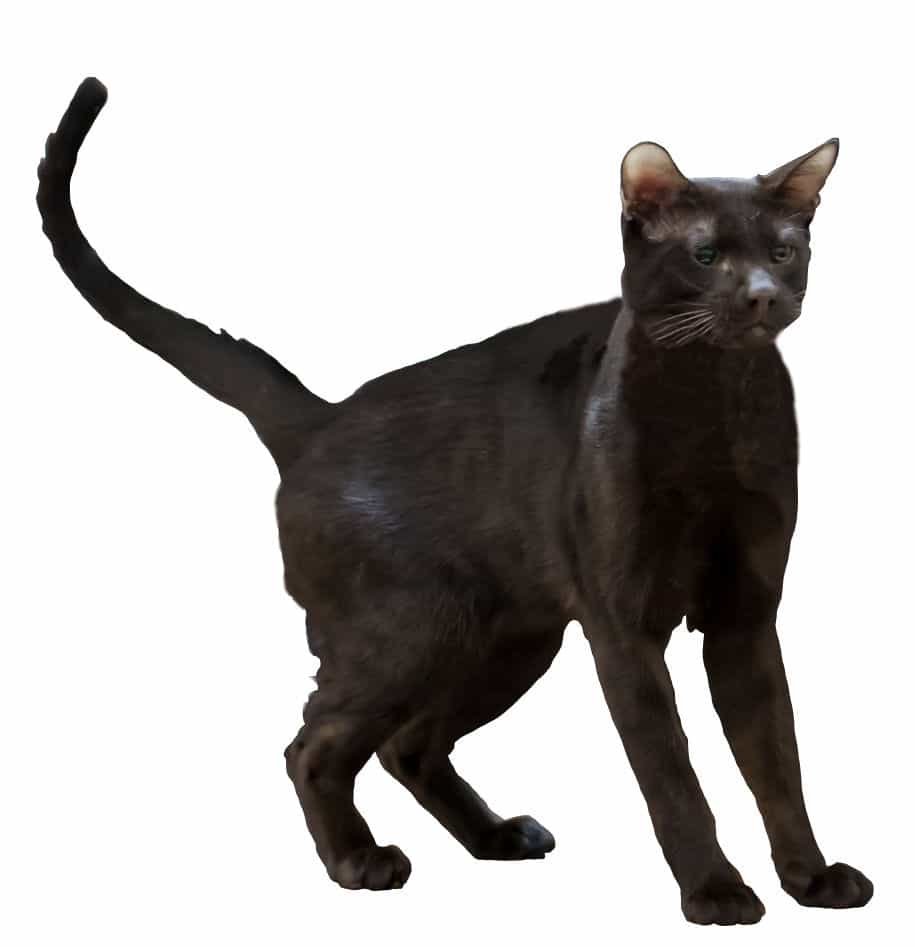

Mrs. Munroe-Smith accidentally crossbred a Siamese cat, Seal point, Elmtower Tombee, and a solid Black domestic cat, Elmtower Susannah, and they gave birth to a male kitten, named Elmtower Bronze Idol. This Bronz Idol was the first Havan Brown cat registered in England and the ancestor of the modern Havan cat breed.
One year later, the breeders continued the accidental breeding as planned. They crossbred a Chocolate point Siamese and A solid Black cat, and the result was Praha Gypka- the male Brown kitten.
They also found other Chocolate and Seal point Siamese to add to this program. Russian Blues were also being used. When they got the obtained Brown color on the kittens, they started to crossbreed each other, the cats, to fix the color gene.
The breeders chose the name `Havana Brown` and applied for official recognition from the GCCF (Governing Council of Cat Fancy) in 1958. In 1971, GCCF approved the name `Havana Brown`. The breed was imported to the American continent in 1956, and Cat Fancier’s Association granted the championship status to Havana Brown in 1964.
One thing that is very important to be mentioned is that Havana Brown lost their popularity in the UK because of their small size.
How did the gene pool of Havana Brown get wide?
The breeders realized that the gene pool of Havana Brown was too limited. There was the non-profitable feline foundation, Winn Feline Foundation, which funded research on how to widen the gene pool of Havana.
The Veterinary Genetics Laboratory of the University of California, devis, helped the breeders to introduce other cats to develop the breed’s gene. Breeders requested Cat Fancier’s Association (CFA) to open the breed to allow crossbreeding with other species.
CFA granted the permission, and Oriental Shorthair, Seal point, and Chocolate point Siamese cats were added to the breeding program. Thus the breed’s gene pool was widened.
Reason Behind the name- Havana Brown
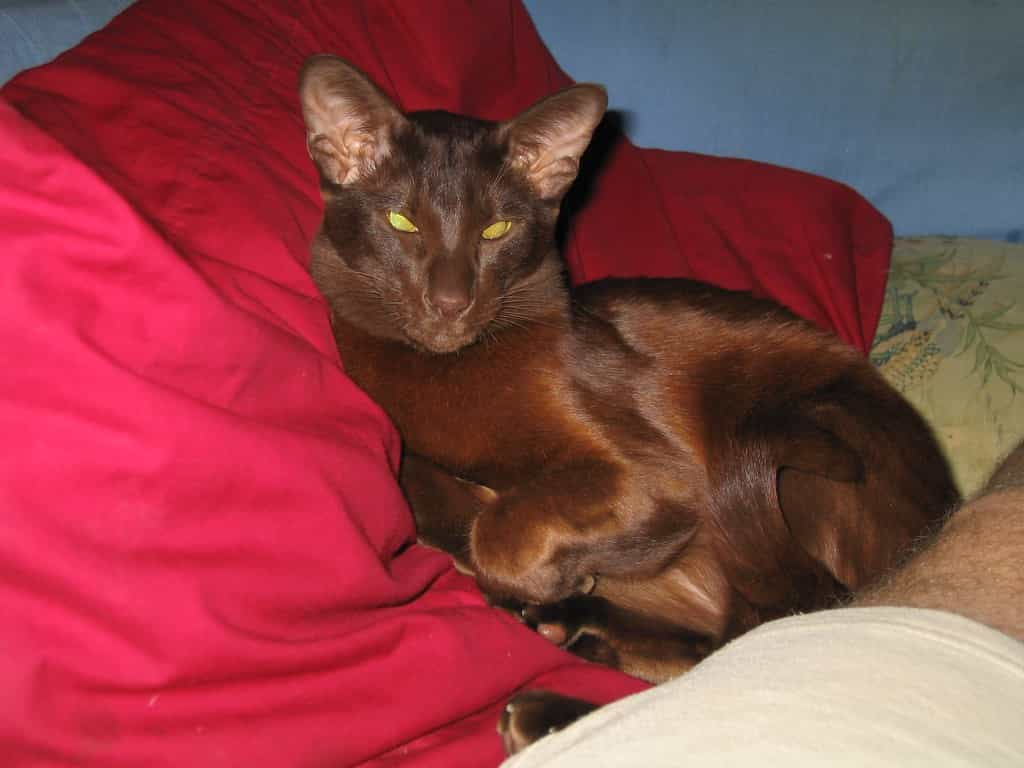

There are 2 stories behind the naming. One is- a solid Brown Havana Rabbit that inspired the name.
The second story is- the burnished chocolaty coat color reminds the Cubanian Cigers and cocoas. So the name came from there.
When is Havana Brown not a Havana brown?
There is a diluted gene in the Havana breed: the Lilac and Lavender-coated Havana brown cat- almost Pinkish, dusty, or lighter Brown color. Every cat breed has a diluted gene that washes out the original coat color.
Not all cat associations but The International Cat Association (TICA) granted the diluted gene as the variation of the Havana Brown cat.
The appearance of Havana brown cats
Body:
An elegant body with medium size, rectangular, Strong bones, and well-muscled proportionate to the body. They have more weight than they seem to. Females are small in size than male cats. They have a Mahogany Brown, soft, glossy, and short coat.
Head:
The head is slightly rectangular, taller than it’s wide, and the head temple is bald. The male cats have jowls only. Muzzles are distinguished, long, and square. A well-developed, strong, and sparse chin. The nose is big with Pinkish Brown color.
Ears:
Ears are large, wide-based, with very small hairs inside and outside and slightly pointed forward. The ears are not wide-based and whip-looking.
Eyes:
Havanas have large and expressive eyes with Green colors (all colors are excepted). The eyes are situated near the top of the nose. Eye color can be different from kittenhood till 1 year of age.
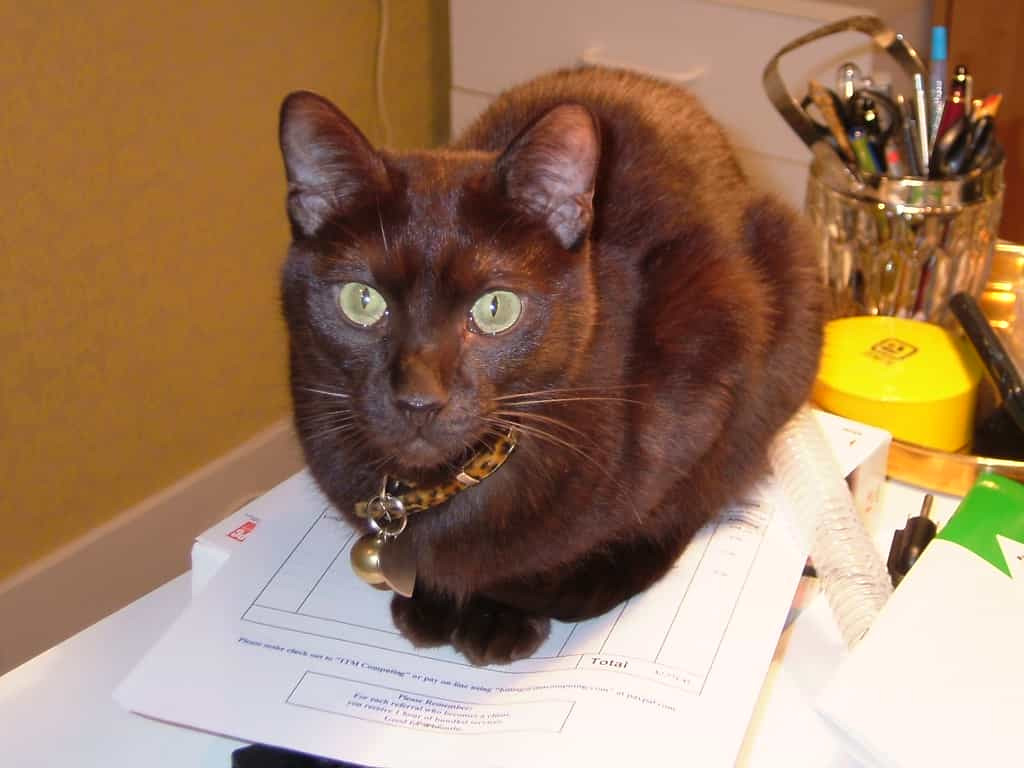

Tail:
Havana’s tail is medium length, thin, and tapering to the tip.
Legs and paws:
Their legs are long and elegant with Chocolate and Pinkish Brown paw pads. Their feet are oval-shaped. Hind legs are longer than the forelegs.
One thing is to be remembered that there are 2 prominent types of the breed- the American type and the British type.
The American type is more muscular and massive than the British type. The American type preserves the longest and slimmest body type of the Oriental Shorthair breed. Both breeds have medium and fine tails.
Temperament and nature of Havana Brown cats
A very sweet, affectionate, dependent cat breed is Havana Brown. They are very affectionate to their owner and want to become a part of their life. They follow their owner across the house and try to seek attention. And, they can’t stay in a busy environment.
You need to give them attention and spend time with them. They don’t like to be alone and separated from their owners. So, if you are busy traveling most of the time, Havana Brown is not for you. They get lethargic, upset, and physically ill because of your absence.
Havana Browns always want to stay beside their human parents. So, people who are not so busy out of home or living a retired life- are the best owner of Havana Brown cats. They are friendly with children and other pets but take time to get intimate with the guests and strangers.
They love to get on the lap of their owners and spend a lazy noon time. Like their Siamese ancestors, Havanas vocalize a lot to make you listen to them, but their voice is sweet, not disturbing as Siamese cats.
Intelligence and trainability of a Havana brown cat
A very intelligent cat breed and also keen to learn. They can learn and also patient. They like the tricks such as fetching. Besides, they play fetch for hours and continue playing till they ask to stop.
Their attitude towards children and other pets:
Havana Browns are so friendly and affectionate towards children and other pets. They know well when to get closer to the children, including toddlers, and when to go away. But you need to note that the meeting should be supervised when you bring a pet to your house or when a baby takes birth to your family.
Besides, you have to train your pets to be social, and your children also have to know how to spend time with the animals. They like to snuggle up and have a cat nap after a busy play and exercise.
Havana Brown is a very intelligent cat breed that knows how to introduce and stay together with big and small animals. You need to be careful about the small animals in your house because Havana Browns are very good players. You also need to keep your small things in a safe place. Otherwise, you won’t see them again.
havana brown cat Caring
Havana Brown cats are low-maintenance cats. They need minimal GroomingGrooming. Just one-time weekly coat brushing is required, but during the shedding season (Springtime), daily brushing will be required to avoid spreading hairs here and there. Use a wet towel to remove the dead hair after brushing.
You can bathe them very occasionally. Check their nails and ears once a week and clean them to avoid infections. Nail trimming is very important. You must brush your cat’s teeth daily as they’re prone to gingivitis.
They’re very good indoor cats. So you don’t need to let them out. They’re very happy being in a flat. Just provide them with their favorite toys to play with.
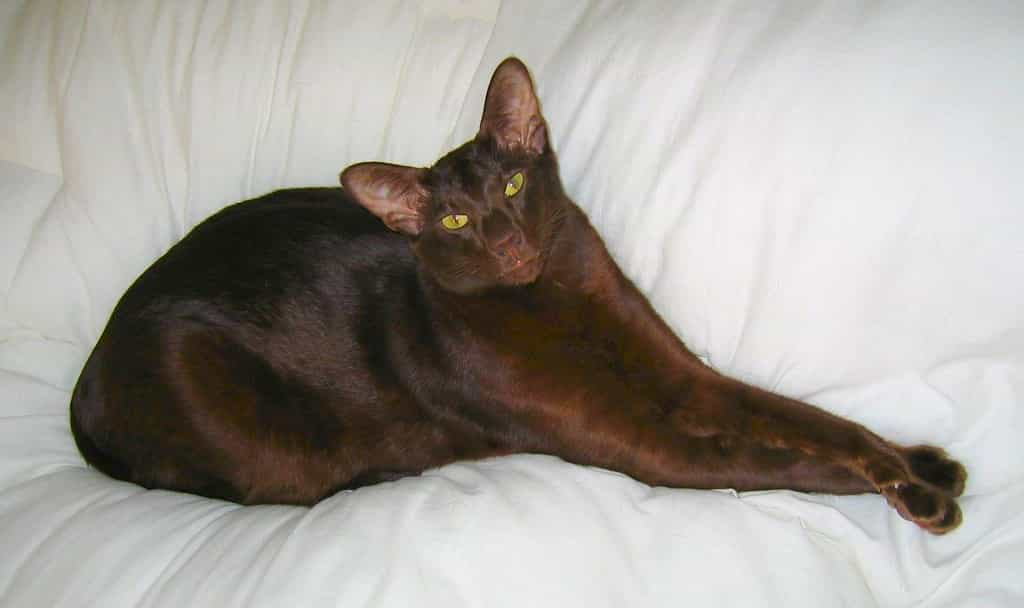

They’re not very much active. So, you don’t need to be constantly alert about their activities. They also don’t need much exercise. Havana Browns are very sensitive to cold. So, ensure it doesn’t come out when the temperature is very low.
Havana Browns playing is their exercise. They have a lot of energy to play fetch, hide, climb cat trees, and see from height. Also, provide them with a big place so that they can snuggle and take a nap. They also love to be active sometimes. So, keep a cat companion of the same nature for them when you get out. Provide them with a scratching post so they can scratch a lot to avoid injuries from their nails.
What about the training for Havana Brown cats?
If you train your Havana Brown from kittenhood, it’ll be easy for them to get used to.
You can provide these things to your adorable kitty-
- Mind-up cat Toothbrush
- Virbac CET Enzymatic cat Toothpaste
- Silicon brush by Celemoon
- Virbac Epi-optic Advanced Cat Cleanser.
- Cliganic Premium cotton rounds.
Health and problems that the Havana Brown breed is prone to
Ringworm:
Dermatophyte fungi are responsible for this health issue. It can be transmitted to humans from cats.
Calcium Oxalate Bladder Stone:
It leads to the blockage of a cat’s urinary tract. Due to high blood Calcium levels and or acidic urine, the prob occurs and develops stones in the urinary tract. It can cause failure in the urinary system.
Respiratory Tract Infections:
The nose, sinuses, pharynx, and larynx can be infected. The symptoms are Fever, watery eyes, runny nose, sneezing, etc.
The breed is also prone to Gingivitis, colds, Diabetes, and allergies.
Calcium Oxalate:
When Calcium Oxalate stones develop in the Urinary Tract, it is called Calcium Oxylate. If it is not attended to on time, it can create blockage in the Urinary system. So, ensure your pet drinks plenty of water to avoid the problem.
Cold problems:
Your Havana can’t tolerate cold. So, save it from the extreme cold to keep it indoors in the winter season.
Take them to the vet after every 6 months.
So, vaccinate them properly and take them to the veterinarian regularly for sound health and the body of your Havana Brown.
Food and nutrition to feed Havana Brown cats
Havanas are not demanding cats. They don’t have special needs in dieting, nor do they raise their nose to eat anything, whether homemade or commercial cat food. Just provide them with a high-quality feline diet with the right measurement according to the vet’s advice. As you already know, the breed has urinary issues, so provide them with enough fresh water to avoid theirs.
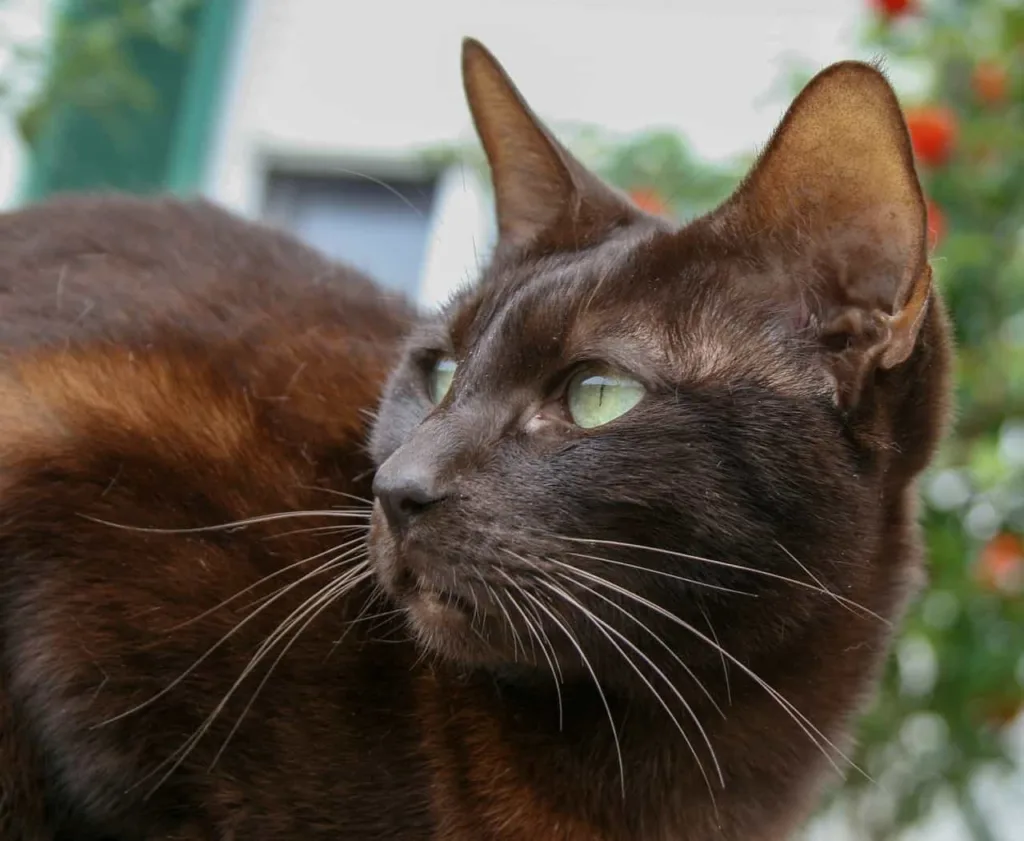

Some facts about Havana Brown
- Havana Brown cats use their paws to touch, get your attention, to taste new things.
- The breed carries small things in their mouth, like your gloves and socks. So, keep those things from the cat’s reach.
- The quirky trait of Havana Brown is- they love to play and touch human hair.
Breed overview of Havana Brown
A very adorable and special cat breed. Though it emerged in the UK and USA, its name was related to Havana, Cuba- a South American country. A very exceptional-looking cat breed that has brown chocolate coat color.
It has a length of 11 inches and a weight of 12 pounds. A very good pet cat breed that doesn’t have any wild traits.
Some matters that you should know before adopting any pet
- Find a reputed and trusted breeder: please check the websites of the cat associations. They publish the list of reputed breeders. The trusted and reputed breeders have their websites.
- A reputed breeder will ask you many questions about your lifestyle and the situation of your house and dwelling place.
- They will provide you with a certificate and test results that they conducted on the pet.
- They’ll be willing to keep in contact after the dealing is done.
- You can have a pet from petfinder.com, adopt-a-pet.com, the cat’s club, cat shows, and shelters.
Havana Brown Cat Grooming Guide
Grooming a Havana Brown cat is an essential aspect of their care, crucial for maintaining their distinctive, lustrous coat. Despite their short fur, regular grooming is necessary to keep their coat healthy and shiny. Brushing a few times a week with a soft brush helps remove loose hair and distribute natural skin oils.
This breed’s grooming also includes routine ear cleaning and nail trimming to maintain overall health and hygiene. Havana Brown cats typically enjoy the grooming process, making it an excellent opportunity for bonding. Paying attention to their grooming needs not only ensures they look their best but also provides an opportunity to check for any signs of skin issues or health problems, playing a vital role in their overall well-being.
Havana Brown Cat Training and Exercise
Training and exercise are vital for the well-being of a Havana Brown cat. Known for their intelligence and playful nature, these cats respond well to interactive and mentally stimulating activities. Training Havana Brown kittens can be both enjoyable and rewarding, using positive reinforcement techniques to teach them basic commands and tricks.
Regular play sessions with toys that mimic hunting behaviors provide much-needed physical exercise and mental stimulation. Exercise is essential not only for their physical health but also for preventing boredom and behavioral issues. Providing opportunities for climbing, exploring, and engaging play helps keep your Havana Brown cat physically fit and mentally sharp, fostering a happy and healthy pet.
Havana Brown Cat Adoption Guide
Adopting a Havana Brown cat is a rewarding experience, offering the joy of adding a loving and unique companion to your life. When considering adoption, it’s essential to research and connect with reputable Havana Brown cat breeders or rescue organizations. Understanding the breed’s characteristics and ensuring their personality and care requirements align with your lifestyle is crucial.
When adopting, inquire about the cat’s health history, temperament, and any specific needs. Preparing your home for their arrival is key, ensuring a safe and welcoming environment. Adopting a Havana Brown cat is not just about providing a home; it’s about committing to a lifelong relationship filled with care, love, and understanding.
Havana Brown Cat Socialization Tips
Socialization is crucial in shaping the personality and behavior of a Havana Brown cat. These cats are known for their affectionate and sociable nature, often thriving on human interaction. Early socialization, especially for kittens, involves exposure to various people, environments, and experiences in a safe and controlled manner.
Positive social experiences help them develop into well-adjusted and confident adult cats. Consistent interaction, play, and affection are vital for their social development. Understanding and respecting each cat’s unique personality during the socialization process is important for their emotional well-being.
Havana Brown Cat Feeding and Maintenance
Feeding and maintaining a Havana Brown cat involves providing a balanced diet and regular health care. The best diet for Havana Brown cats should be high in quality protein and essential nutrients to support their health and vitality. Portion control and regular meal times are crucial to prevent overfeeding and maintain a healthy weight.
Fresh water should always be available to ensure proper hydration. In terms of health care, routine veterinary check-ups, vaccinations, and preventive measures are essential to address any health issues and maintain their overall well-being. A safe, stimulating, and loving environment contributes significantly to the health and happiness of your Havana Brown cat.
Conclusion
In conclusion, the Havana Brown cat, with its unique chocolate-colored coat and affectionate personality, makes for a delightful and engaging companion. Understanding their specific needs in terms of grooming, nutrition, socialization, and overall care is crucial for their well-being. Whether you’re already an owner or contemplating adopting a Havana Brown, this guide provides the foundation for a rewarding and loving relationship with these charming cats. Embrace the joys of life with a Havana Brown cat, and enjoy the unique companionship they offer.

